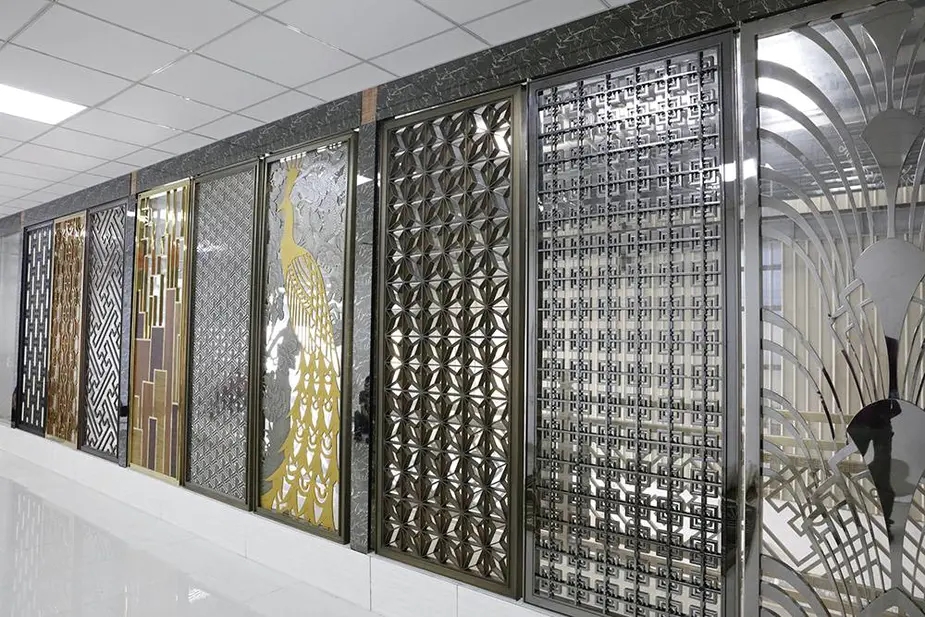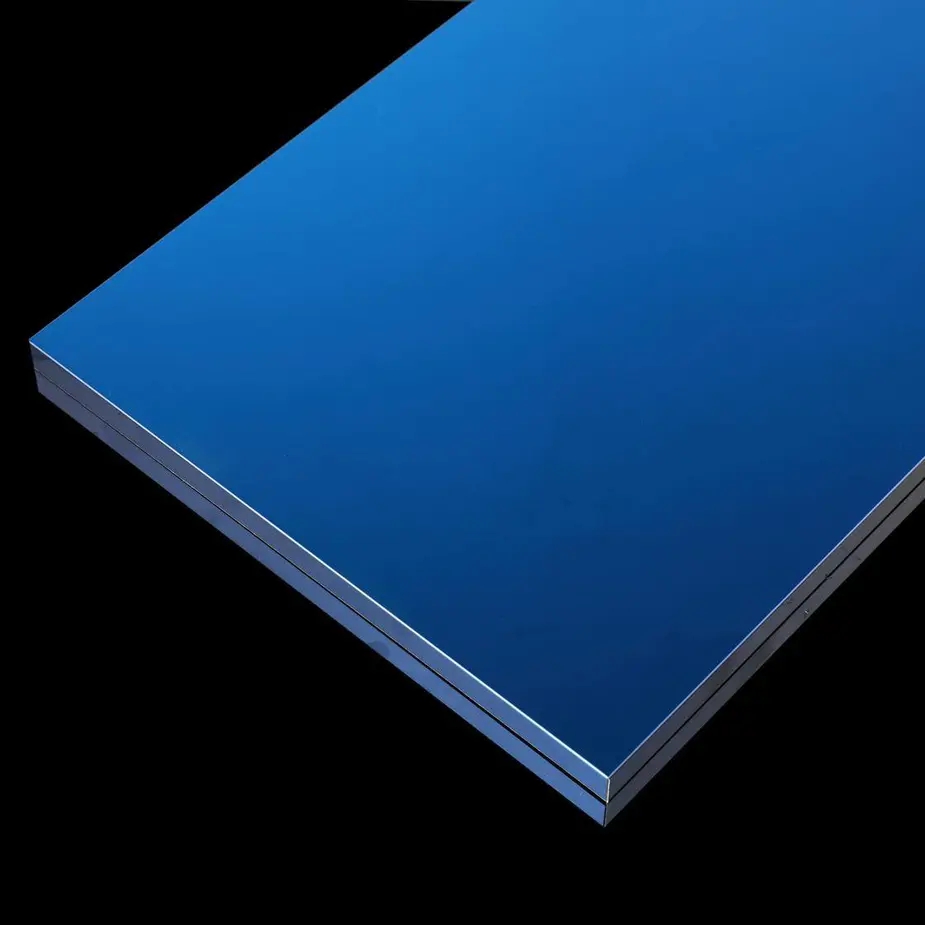Stainless steel is renowned for its corrosion resistance, durability, and aesthetic appeal, making it an ideal material choice for a wide range of applications across various industries. From kitchen appliances and medical devices to elevator decoration, doors, hotel decor, and hardware, stainless steel products are in high demand. However, welding this versatile material requires specialized techniques and expertise to ensure optimal performance and longevity.
In this comprehensive guide, we'll explore the art of stick welding stainless steel, a time-tested and cost-effective process that offers unparalleled versatility and portability. Whether you're a seasoned welder or just starting out, this step-by-step guide will equip you with the knowledge and skills to achieve strong, corrosion-resistant welds on stainless steel, ensuring your projects meet the highest standards of quality and durability.
Why Choose Stick Welding for Stainless Steel?
Stick welding, also known as Shielded Metal Arc Welding (SMAW), is a popular choice for welding stainless steel due to its numerous advantages:
- Versatility: Stick welding can be used on a wide variety of stainless steel grades, including austenitic, martensitic, and ferritic alloys.
- Portability: Unlike other welding processes that require external shielding gas, stick welding is self-shielded, making it suitable for field work and remote locations.
- Cost-effectiveness: With minimal equipment requirements and consumables, stick welding offers a cost-effective solution for stainless steel welding projects.
- Ease of Use: Stick welding is relatively simple to learn, making it an excellent choice for beginners or those performing occasional welding tasks.
- Deep Penetration: The process produces deep and strong welds, ideal for welding thick materials or areas with limited access.
Step 1: Select the Right Stainless Steel Electrode
The first step in achieving a successful stainless steel weld is selecting the appropriate electrode. Choosing the correct electrode is crucial as it ensures compatibility with the base metal's composition, preventing issues such as weld cracking, corrosion, or other defects.
Common electrode options for stainless steel include:
- 308L electrode for welding 304L stainless steel
- 309L electrode for joining stainless steel to mild steel
- 316L electrode for welding 316L stainless steel
Consult the filler metal manufacturer's specifications or refer to industry standards to select the optimal electrode for your specific application and base metal composition. Using the wrong electrode can lead to compromised weld quality and performance.
Xinguangyuan, a leading manufacturer of high-quality stainless steel products, offers a wide range of decorative plates, screens, and garnitures in various specifications to meet the diverse needs of industries. Their expertise in surface processing techniques like mirror surface processing, frosting, drawbenching, glazing, and etching ensures exceptional product quality and aesthetic appeal.
Step 2: Set Up Your Welding Machine
Once you've selected the appropriate electrode, it's time to set up your stick welding machine. Proper machine setup is crucial for achieving consistent and high-quality welds.
-
Set the Polarity: For stainless steel welding, set your machine to DC electrode positive (DCEP) polarity. This setting provides a more focused heat at the arc and deeper penetration into thicker materials.
-
Adjust the Amperage: The amperage setting depends on the electrode diameter and the thickness of the metal you're welding. As a general guideline, follow these amperage ranges:
| Electrode Diameter | Amperage Range | | ------------------ | --------------- | | 3/32" | 40-80 A | | 1/8" | 75-125 A | | 5/32" | 110-170 A |
Consult the electrode manufacturer's recommendations or industry standards for precise amperage settings based on your specific application and material thickness.
-
Prepare Your Work Area: Ensure your work area is free from flammable objects and well-ventilated. Always wear appropriate personal protective equipment (PPE), including safety glasses, welding gloves, and a welding helmet, when operating welding equipment.
Xinguangyuan's commitment to quality extends beyond their products to their welding expertise. Their team of skilled professionals can guide you in selecting the appropriate equipment, settings, and techniques for your stainless steel welding projects, ensuring optimal results and adherence to industry standards.
Step 3: Prepare the Joint
Proper joint preparation is essential for achieving strong, high-quality welds on stainless steel. Follow these steps to ensure a clean and secure joint:
-
Clean the Surfaces: Use a stainless steel wire brush, flap disc, or grinding wheel dedicated solely to stainless steel to remove any oil, grease, dirt, oxides, or contaminants from the joint surfaces. Avoid using tools contaminated with mild steel, as this can lead to rusting and compromise the weld quality.
-
Bevel Thicker Materials: For thicker materials, bevel the edges to ensure proper joint penetration and fusion. The bevel angle and depth will depend on the material thickness and joint configuration.
-
Clamp the Workpieces: Securely clamp the workpieces to maintain proper alignment and minimize distortion during the welding process.
Xinguangyuan's expertise extends beyond stainless steel products to comprehensive welding solutions. Their team can assist you in selecting the appropriate joint designs, fit-up techniques, and clamping methods to ensure optimal weld quality and performance for your specific application.
Step 4: Strike an Arc and Establish Proper Technique
With your machine set up and the joint prepared, it's time to strike an arc and begin the welding process. Proper technique is crucial for achieving strong, consistent, and visually appealing welds.
-
Strike the Arc: Scratch the electrode along the joint at a 15-20° angle to establish an arc. Maintain a short arc length, approximately equal to the electrode diameter, to avoid introducing excessive oxygen into the weld pool, which can cause porosity.
-
Control Travel Speed and Weaving: Use a drag technique, with the electrode angled back 15° in the direction of travel. Maintain a steady travel speed to ensure consistent penetration. Weave the electrode slightly from side to side to wash the edges of the joint and control bead width. Avoid excessive weaving, which can overheat the weld and promote distortion.
-
Manage Heat Input: Stainless steels are sensitive to heat input during welding. Overheating can cause excessive grain growth, carbide precipitation, distortion, and reduced corrosion resistance. To minimize heat input:
- Use the lowest amperage necessary for adequate penetration.
- Avoid excessively slow travel speeds.
- Weld in small increments, allowing time for the metal to cool between passes.
- Use a stringer bead technique instead of excessive weaving.
-
Clean Between Passes: Thoroughly clean each weld pass with a stainless steel wire brush before depositing subsequent passes. Removing slag and oxides will help prevent weld contamination and porosity.
Xinguangyuan's team of experts can provide hands-on training and guidance to ensure your welding team masters the proper techniques for stick welding stainless steel. Their commitment to quality extends beyond their products to comprehensive support and knowledge-sharing, ensuring your projects meet the highest standards of excellence.
Step 5: Allow Slow Cooling and Consider Post-Weld Cleaning
The final steps in the stick welding process for stainless steel involve proper cooling and optional post-weld cleaning to restore maximum corrosion resistance.
-
Allow Slow Cooling: Unlike mild steel, stainless steel welds benefit from slow cooling after welding. Whenever possible, allow the weldment to cool slowly in still air. Avoid quenching or cooling too rapidly, as this can reduce corrosion resistance.
-
Post-Weld Cleaning (Optional): To restore maximum corrosion resistance, consider cleaning the weld with a pickling paste or solution formulated for stainless steel. Pickling will remove the heat tint and oxide scale that forms during welding. Alternatively, use abrasive tools like flap wheels or non-woven pads to remove heat tint and blend the weld to match the surrounding metal.
By following these guidelines and maintaining proper welding techniques, you can achieve strong, corrosion-resistant welds when stick welding stainless steel. Always wear appropriate personal protective equipment and follow the filler metal manufacturer's recommendations for preheating, interpass temperatures, and post-weld heat treatment.
Xinguangyuan's commitment to quality extends beyond the welding process. Their team can provide guidance on post-weld cleaning and surface finishing techniques to ensure your stainless steel products meet the highest standards of corrosion resistance, durability, and aesthetic appeal.
Elevate Your Stainless Steel Projects with Xinguangyuan
At Xinguangyuan, we understand the importance of high-quality stainless steel products and welding expertise in various industries, from kitchen appliances and medical devices to elevator decoration, doors, hotel decor, and hardware. Our team of skilled professionals is dedicated to providing comprehensive solutions that meet and exceed your expectations.
Whether you need decorative plates, screens, or garnitures in specific specifications, or require guidance on surface processing techniques like mirror surface processing, frosting, drawbenching, glazing, or etching, we are here to support you every step of the way.
Contact us today to learn more about our stainless steel products and welding solutions, and elevate your projects to new heights of quality, durability, and aesthetic appeal.


